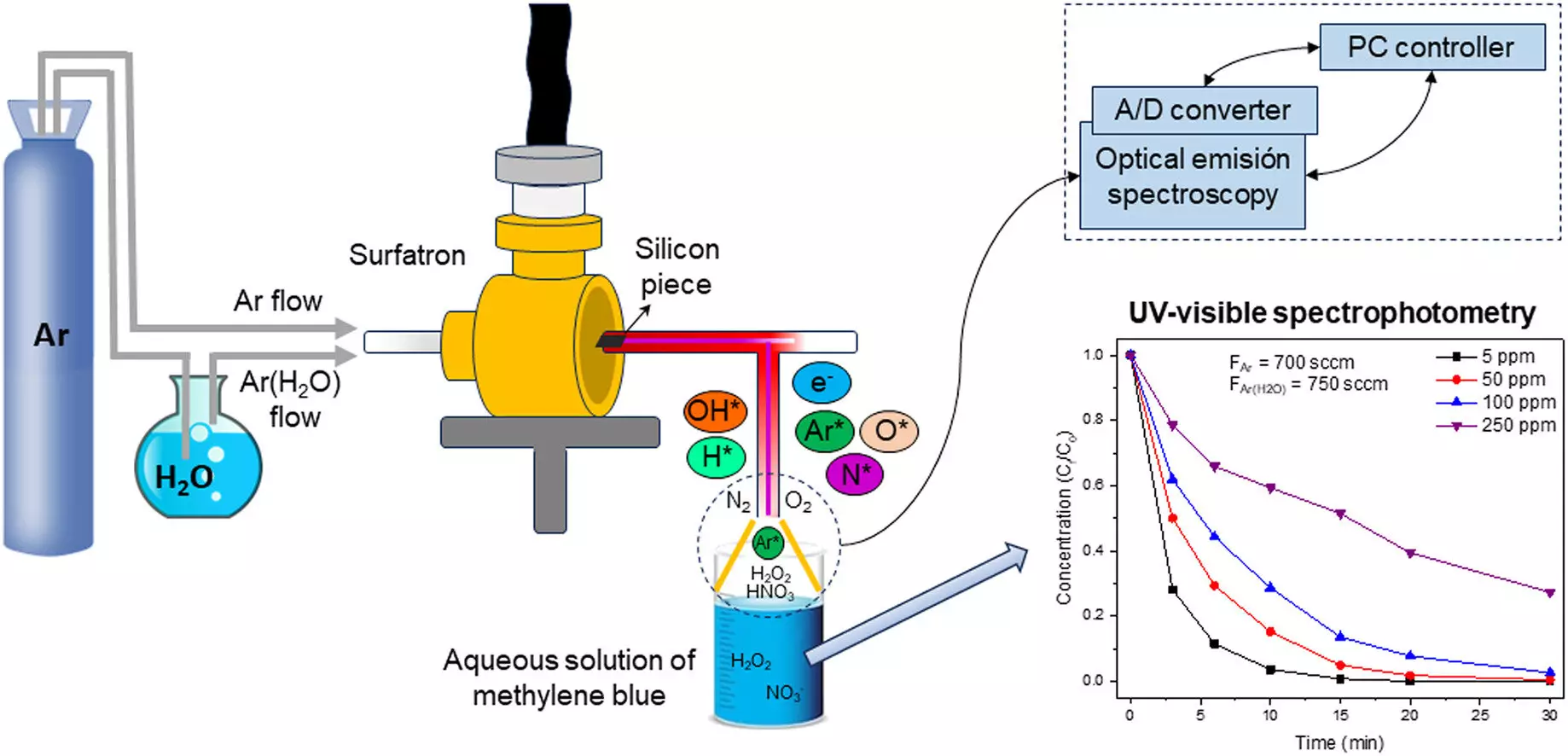Plasma, often referred to as the fourth state of matter, is an ionized gas that consists of electrons, ions, atoms, molecules, radicals, and photons. This unique form of matter has revolutionized various industries, from technology to healthcare. In recent research conducted by the FQM-136 Physics of Plasmas and FQM-346 Organic Catalysis and Nanostructured Materials groups at the University of Córdoba, plasma has demonstrated its remarkable ability to eliminate contaminants in water and pave the way for more efficient water treatment processes. This article delves into the groundbreaking study published in the journal Chemosphere, highlighting the implications of plasma in solving the escalating issue of organic pollutants in aquatic systems.
Traditionally, the manufacturing of electronic devices like mobile phones necessitated the use of polluting chemical products to engrave circuits on silicon plates. However, the emergence of plasma technology has allowed for cleaner and more precise processes, enabling the production of smaller and more powerful devices. Plasma has truly transformed the technology industry by facilitating advancements that were once unthinkable.
Recognizing the pressing need to address the rising presence of organic pollutants in water sources, such as dyes and compounds originating from agricultural and industrial activities, researchers turned to plasma as a potential solution. In 2017, these scientists demonstrated that argon plasma generated by microwaves could produce reactive species containing oxygen and nitrogen when exposed to water. These species, including hydroxyl radicals and nitrogen radicals, exhibited the ability to decontaminate water by breaking down pollutants.
Building on their previous findings, Juan Amaro Gahete, Francisco J. Romero Salguero, and María C. García successfully developed a plasma reactor capable of significantly increasing the generation of active species in water. By modifying the design of the microwave-mixed plasma generator, known as the surfatron, the researchers created a non-filamentary plasma that exhibited enhanced efficiency in producing active species upon interaction with water. The inclusion of a small piece of silicon in the quartz discharge tube played a crucial role in unleashing the reactor’s full potential.
When the plasma components interact with water, they generate oxidizing species that possess the remarkable ability to degrade organic compounds and eliminate microorganisms. Unlike traditional water treatment methods, the plasma does not directly enter the water. Instead, it acts remotely, creating a zone of air between the plasma and water where various reactions occur due to collisions between excited species and molecules of oxygen, nitrogen, and water vapor. As a result, reactive species diffuse into the liquid, attacking and neutralizing contaminants.
Thanks to the innovative design of the plasma reactor, its decontaminating potential has been successfully demonstrated. The researchers conducted experiments that proved the system’s capability to rapidly reduce high concentrations of methylene blue dye in water, achieving complete elimination in significantly reduced treatment times. This breakthrough not only marks a significant step forward in plasma applications but also offers a promising solution to combat water pollution and ensure healthier aquatic ecosystems.
With this research, the realm of plasma applications continues to expand. Plasma, once confined to the realms of technological advancements, is now proving its worth in water treatment processes. Beyond water remediation, plasma technology finds applications in diverse fields, including manufacturing microchips, disinfecting surfaces, promoting wound healing, depositing anti-reflective coatings on glasses, improving seed germination, recovering waste, activating the surface of plastics, and countless other areas. The potential for plasma seems boundless, empowering scientists and engineers to explore new possibilities and revolutionize various industries.
The study conducted by the University of Córdoba researchers sheds light on the immense potential of plasma in water treatment and environmental remediation. Through the development of a new plasma reactor design, the researchers have unlocked a more efficient and effective approach to eliminate organic pollutants in water. As the world grapples with escalating water pollution and its detrimental consequences, plasma technology offers a ray of hope. By harnessing the power of plasma, we can transform contaminated water into a valuable resource, preserving ecosystems and promoting a sustainable future.


Leave a Reply